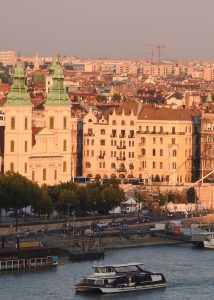
Budapest Inner City Parish Church BRC
Many of the finest attractions by the river Danube are located in Budapest, whose riverside sights are on the UNESCO World Heritage list. A Danube River Cruise can be a perfect opportunity to discover all these beautiful sights.
- THE RIVER DANUBE: The river Danube is Europe’s 2nd longest river, it runs through 10 countries (and 4 capitals) from the Black Forest (Germany) to the Black Sea (Romania and Ukraine). The approx. 350m wide river divides the city of Budapest into 2 parts: hilly Buda (west) and flat Pest (east). This beautiful river inspired several artists, painters, musicians, poets: probably the most known piece is the Blue Danube Waltz by Johann Strauss. Check out our Budapest Cruise calendar for available cruises.
Chain Bridge
CHAIN BRIDGE: The Szechenyi Chain Bridge was the first permanent bridge of Budapest opened in the mid 19th century, named after the “Greatest Hungarian” Count Szechenyi. Little is it knows that most of the bridge was build from a Greek merchant’s money who had many vested interests in Budapest. The builders? The English Clark engineers. The Chain Bridge has an important role in the Red Bull Air Races, as flying upside down under the bridge is a standard routine of the race. Why not book a dinner cruise in Budapest to enjoy the sights at night?Hungarian Academy
HUNGARIAN ACADEMY: The riverside building of the Hungarian Academy of Sciences located near the Chain Bridge was built in 1865 in Renaissance Revival style. Most of the money was offered by the “Greatest Hungarian” Count Szechenyi. Although he did not speak Hungarian, he loved Hungarians so much that the Academy was established to nurture the Hungarian language and sciences. The Academy stands on the Szechenyi Square which is surrounded by other famous buildings, such as the Gresham Palace (where the 5-star hotel Fours Season resides). The dock of several cruises leaves from near the Academy, like the Cocktail cruise, the Beer cruise etc.Gresham Palace
GRESHAM PALACE: Gresham Palace is named after the founder of the Royal Exchange in London, as the building was erected in 1906 by the British Gresham Life Assurance company to offer accommodation and offices to its employees. During the Communist regime the now prestigious building was handled as an average residential building, downplaying its beauty and importance in the name of equality (that “rotten capitalism”). Gresham Palace is known today as the Hotel Four Seasons, which is the top luxury hotel of Budapest: its painstakingly restored Art Nouveau features, Peacock ironwork gate, stylish elevators and hotel rooms with a view over the river Danube make it an exceptional – and exceptionally expensive – hotel, often featured in the top lists of Conde Nast Traveller. If you enjoy luxury, we can recommend the high end dinner cruise of Budapest: the A La Carte Dinner Cruise on a beautiful panorama boat.Budapest Gresham Palace Night BRC
Buda Castle & Hill
BUDA CASTLE HILL: The Castle District (also the District I in Budapest) is located up on the Buda Castle Hill, and it’s famous for the medieval, baroque and 19th century houses, churches and cobble-stoned streets. Buda Castle was built on the southern tip of the Hill in the 13th century, lost in the siege of 1541 to the Turks who transformed the Castle Hill into a Turkish town, then regained in 1686 by the Austrians to turn it into a German speaking town. The Hill has many hidden treasures, from nuclear bomb shelters to labyrinths, and a Spy Museum. Book a Buda Castle Tour to learn more. The Buda Castle has been an UNESCO World Heritage Site since 1987. You can learn more about the history of Budapest on the sightseeing guided cruises on the Danube.- MATTHIAS CHURCH: Though Matthias Church dates back to the 11th century, most of its Gothic features were formed in the 14th century. The Roman Catholic church located on the Buda Castle Hill has witnessed many a coronation ceremonies, like the crowning of King Matthias the Fair (hence the name of the church) whose crown happened to be held in captivity by the Czech king at that time, or the Habsburg Franz Joseph the Austro-Hungarian king. Matthias Church is one of the gems of the Buda Castle Hill along with the neighboring Fisherman’s Bastion. During the Turkish rule (1541-1686) the church was turned into a mosque, now its walls are covered in 19th century romantic historical scenes, making the interior of the church utterly beautiful and unique. Matthias Church is also the venue of beautiful concerts: you can enjoy music on the river Danube on the Folk Dinner Cruise programs in Budapest.
- FISHERMAN’S BASTION: Fisherman’s Bastion is a beautiful neo-Gothic bastion/terrace that commemorates the Fishermen’s Market of the Water Town part of the then royal Buda. The Bastion surrounds the Matthias Church and provides a breathtaking panorama view of the city of Budapest. It was built in 1902, well before Walt Disney designed its logo with its fairy tale resemblance (perhaps inspired by the Fisherman’s Bastion?). The bastion has 7 towers that represent the leaders of the 7 Hungarian tribes in 895 in the Carpathian Basin, who finally decided to settle down, and stop savagely wandering. It took another 100 years or so to establish the Hungarian Kingdom, gradually turning the wandering nomads into farmers under the blessing of the Catholic Church (wasn’t an easy transformation though). To relax after a long walk up the Buda Castle Hill, you can enjoy sightseeing by sitting on the Snack Cruise with Unlimited Drinks. Just sit back and soak in the views.
- HUNGARIAN PARLIAMENT: The Hungarian Parliament is one of the most popular tourist attractions in Budapest: the tiny Hungarian country has the 3rd largest parliament in the whole world (true, the country used to be bigger during the Austro-Hungarian empire). The imposing Gothic Revival style building is the largest building in Hungary, now part of the UNESCO World Heritage. After the union of Buda and Pest towns in 1873, now known as BudaPest, an international competition was announced to build a suitable home for the new Hungarian government. Two other buildings were emerged as competitors (still standing as the Ethnographic Museum and the Hungarian Ministry of Agriculture), but finally the current Parliament design won. Unfortunately, its architect didn’t have the chance to see his creation in real, as he went blind before the building became finished. The Hungarian Coronation Jewels are kept in the Parliament, which is available for tourists via guided tours. Budapest is the capital of Hungary, but it’s worth taking a tour outside the city. See the beautiful countryside on the Danube Bend Tour.
- MARGARET ISLAND: Margaret Island is a 2.5 km long island and recreational park located in the heart of Budapest, with parks, music fountains, thermal hotels, pools, running tracks. It is connected to the “mainland” by two bridges, the Arpad Bridge and the Margaret Bridge. Margaret Island (Margit sziget), formerly known as the Rabbit Island, was named after the daughter of Hungarian King Bela IV, who lived in the Dominican convent on the island. Visiting the Island is easy as part of a guided sightseeing cruise (runs several times a day) with free vouchers included. There are several attractions on the Margaret Island that are worth visiting, such as the Music Fountains, the Japanese Garden, the Art Nouveau Water Tower.
- MUSEUM OF ETHNOGRAPHY: The building of the Museum of Ethnography was originally built for the Ministry of Justice, at the end of the 19th century, but the National Museum’s Ethnographic Department moved here almost 100 years later. It is located right near the building of the Hungarian Parliament. The exhibitions include thousands of folk items, mostly from Hungary and the Carpathian Basin, but also from other countries. The Museum Gift Shop offers unique and authentic handcrafts.
- ELISABETH BRIDGE: The 290m long white suspension bridge is a popular bridge of Budapest, re-built in modern style after the massive WWII destruction of the Nazi troops. The original Elizabeth Bridge built in 1903, was named after Sissi, aka Elisabeth of Bavaria, the beloved queen of the Austro-Hungarian Monarchy, who loved the Hungarians dearly, and the peoples of the Hungarian Kingdom equally cherished her memory in various statues, buildings, streets, and with her own bridge. In 2009 the bridge has received its special night illuminations. Half of its costs were covered by Japan as the celebration of 140 year long cooperation between the Japanese and Hungarian governments. The Bridge is in the vicinity of 3 thermal baths in Budapest, so during winter days, the thermal waters need to be pumped on a daily basis to avoid the corrosion of the metal structure.
- RUDAS BATH: Rudas Bath is one of the thermal baths in Budapest located right near the river Danube, getting its water from the hot springs under the Buda Hills. What makes the bath special is its still functioning Turkish Bath complemented with several beautiful and contemporary pools and bath facilities. There is a smallish but popular rooftop tub on top of the Rudas Bath from where you can enjoy the riverside views while soaking in the thermal waters. The bath is men only most weekdays, but co-ed during the weekends.
- GELLERT HILL: Gellert Hill is a 235m high hill covered in lush forests on the Buda side of Budapest, soaring over the river Danube. On the top of Gellert Hill you can see the rectangular shaped building of the stern Citadel (a 19th century fortress) and the iconic Statue of Liberty, the athletic female figure holding a palm leaf commemorating the fighters for freedom and peace. From the top of Gellert Hill you can overlook the whole city of Budapest in every direction, including the fascinating Fireworks on Aug 20 (check out our Budapest Fireworks Cruise range).
- CAVE CHURCH: The Cave Church in Budapest was built in the caves of Gellert Hill. According to the tradition, a hermit called St Ivan lived there, and healed people with the natural thermal water of a hot spring inside the cave. This spring is believed to be the same that provides the thermal waters of Gellert Spa.
Liberty Bridge
LIBERTY BRIDGE: The historical green bridge of Budapest is called Liberty Bridge (once called Franz Joseph Bridge, but the Hungarians preferred to get rid of some unpleasant memories of the Austro-Hungarian Empire). Liberty Bridge connects two important squares, Fovam Square (where the Budapest Market Hall is located) on the Pest side, and the Gellert Square (with the famous Gellert Bath) on the Buda side.- GELLERT SPA: Gellert Spa is one of the Art Nouveau gems of the European continent with its wonderful painted walls, elegant curves, organically growing motifs on colourful mosaics and stained glasses. Built in 1918, the bath was an outstanding contemporary technical and medical achievement with its thermal bath labyrinth, infra sauna, salt chamber for inhalation, and glass roofed golf course with tropical plants. The healing properties of the natural hot springs and the mineral rich muddy pools were already discovered in the 13th century: King Andrew II established a hospital on the premises to cure the medieval illnesses of knights and noble men. Now the muddy pools and the golf course are gone, but the relaxing pools and massage treatments still await the thousands of guests (including many of celebrities like President Nixon, Yehudi Menuhin, etc.).
- HOTEL GELLERT: Danubius Hotel Gellert was built in the same building as Gellert Spa in 1918 in Art Nouveau style. Although the building was heavily damaged in WW2, you can still see the stained glass windows by the elevator, and the traces of Art Nouveau design, lending the hotel a special character and a special Eastern European charm. The Brasserie of the Hotel offers great meals at an affordable price, while the restaurant has a terrace with views over the river Danube.
- UNIVERSITY OF TECHNOLOGY: The 19th century building of the Budapest University of Technology is located on the Buda side of the river Danube. Although the building is from the late 19th century, the Institute of Technology was established in 1782, making it one of the oldest specialty universities in technology in the world, nowadays attended by more than 21,000 students from over 50 countries. The University played an important role in the 1956 Revolution against the Soviets: students and professors ignited the 1956 uprising, fought against the communist regime, and became the martyrs of facing oppression. They set off a chain of events that spread all over Hungary. Despite the failure of the nationwide revolution, the University remains the emblem of Hungarian freedom fighters. There would be no Hungarian Republic today without the strong headed students of the University of Technology.
- A38 SHIP: The standing ship is a former Ukrainian stone-carrier boat, which functions as a modern club and cultural centre. If you are interested in visiting it, don’t hesitate to book a Party Cruise, where the program ends at A38 Club.
- PALACE OF ARTS: The Palace of Arts opened in 2005, next to the National Theater. It has 3 main areas: the Bartok National Concert Hall (with world class acoustics designed by Russell Johnson), the Ludwig Museum (museum of contemporary arts), and a Festival Theater. The entire area is 64 000 sq. metres.
- NATIONAL THEATER: The main theater of Budapest is the National Theater, opening in the 19th century. It had several locations throughout the years, and found its final home in 2002 on the riverbank. The building gives the impression of a ship floating on the Danube.
- THE WHALE: This state-of-the-art cultural, entertainment and shopping center was opened in 2013, and was named after its shape. The modern whale-shaped building (“CET” or “Bálna” in Hungarian) is combined with two beautifully restored historic warehouses from the 19th century.
- UNIVERSITY OF ECONOMICS: The main building of Corvinus University of Economics is located on the Pest side of the Danube, near the Liberty Bridge and the Great Market Hall. The beautiful Neo-Renaissance building was finished by 1874, and functioned as a Toll House during the busy trading days of the flourishing Budapest in the successful and peaceful years of the Austro-Hungarian Empire. During the WWII the building was used as a military base by German and later by the Soviet troops. The once Toll House was turned into the University of Economics in 1948, now attended by over 14,000 students from all over the world, featuring popular MBA and MiM courses.
Vigado Concert Hall
VIGADO CONCERT HALL: Vigado is the second largest concert hall of Budapest. It was built in 1859, and was badly damaged during the WW2. The restoration took 36 years. Nowadays the Concert Hall is known for the popular Hungarian Folk Shows – as they are the home stage of the Hungarian State Folk Ensemble.- GREAT MARKET HALL: Great Market Hall (or Central Market Hall) is a must see attraction in Budapest, not only because it is the oldest indoor market place of Budapest, but also because it is perhaps the biggest and most beautiful market halls in Europe. The Market Hall (Vasarcsarnok) was built in 1879 in Neo-Gothic style, on 10,000 square meters (107,639 square feet). It is located near the Pest end of the Liberty bridge, by the river Danube to facilitate the river transportation and fresh sale of goods. Try a Tasting Tour in Budapest including a guided visit in the Great Market Hall, or enjoy a Wine Tasting Cruise gliding by the many attractions of the Budapest Danube riverbanks.
The River Danube
Chain Bridge
Hungarian Academy of Sciences
Gresham Palace
Buda Castle Hill and Castle District
Matthias Church
Fisherman’s Bastion
Hungarian Parliament
Margaret Island & Margaret Bridge
Museum of Ethnography
Elisabeth Bridge
Rudas Bath
Gellert Hill
Cave Church
Gellert Spa
Gellert Hotel
Liberty Bridge
University of Technology
University of Economics
Vigado Concert Hall
Great Market Hall
Budapest
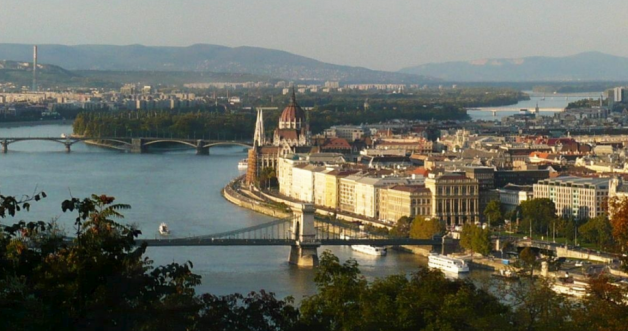
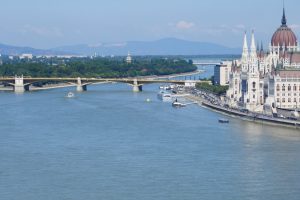
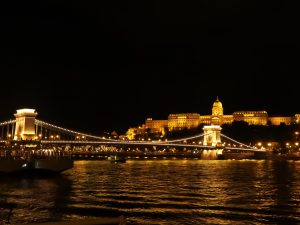
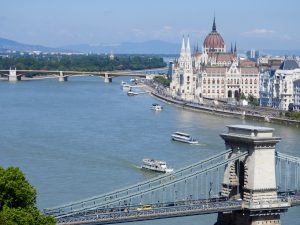
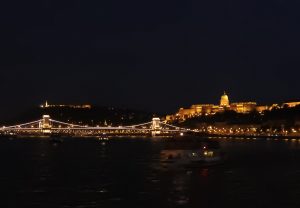
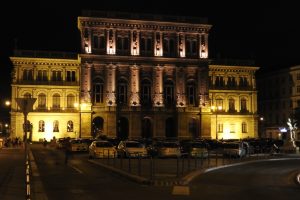
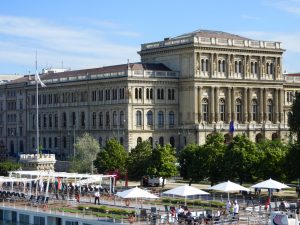
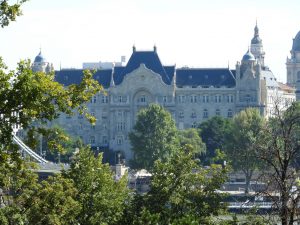
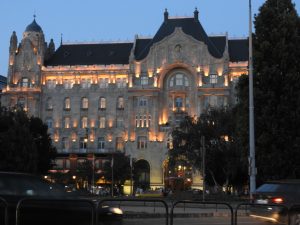
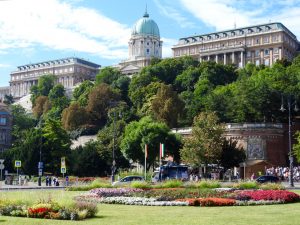
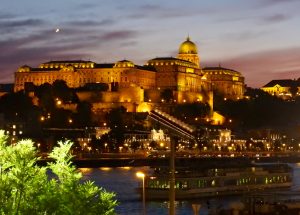
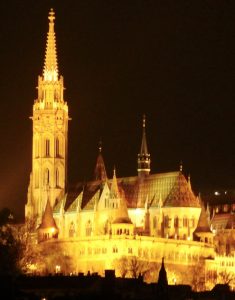
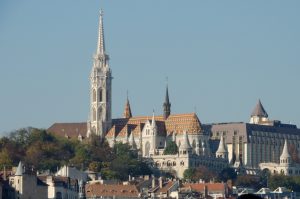
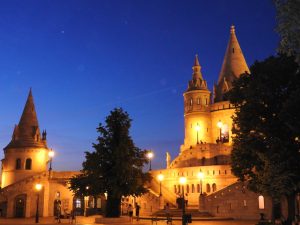
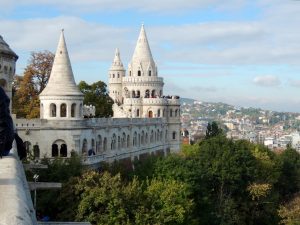
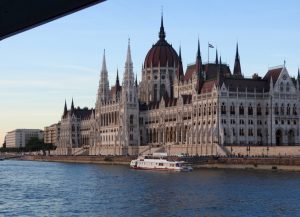
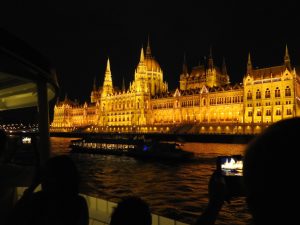
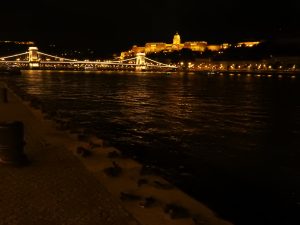
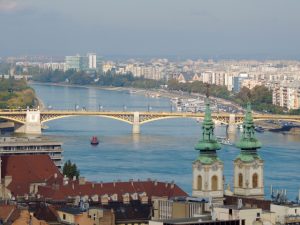
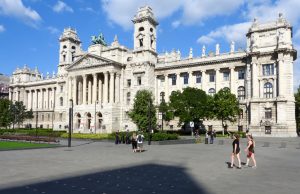
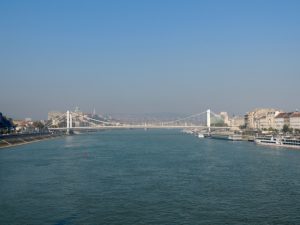
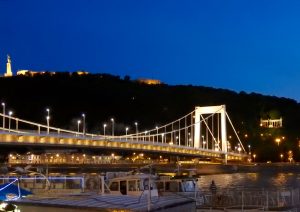
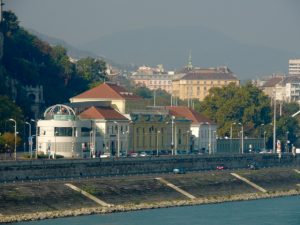
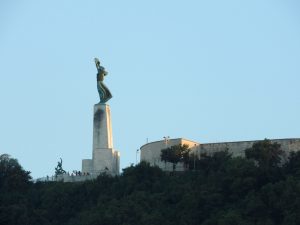
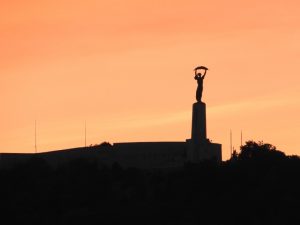
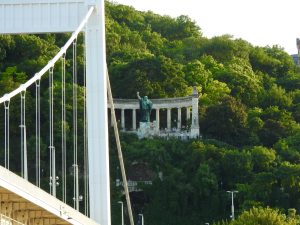
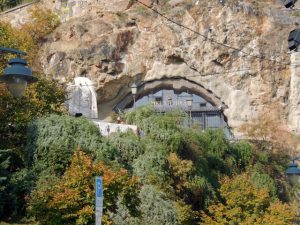
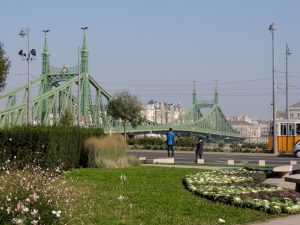
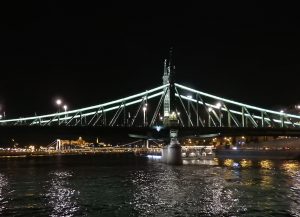
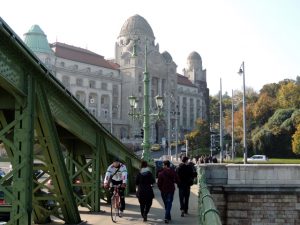
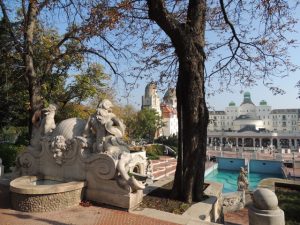
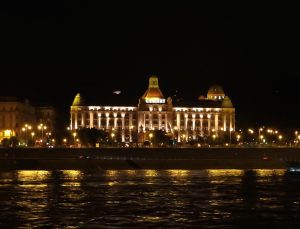
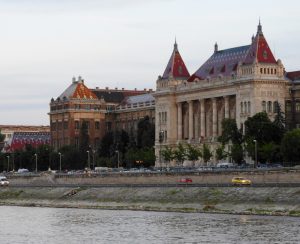
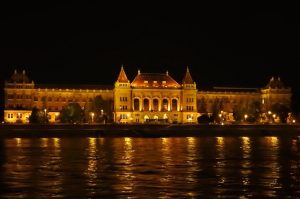
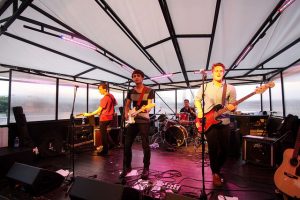
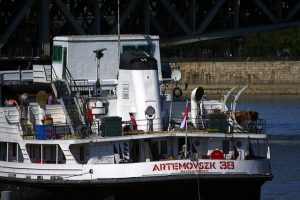
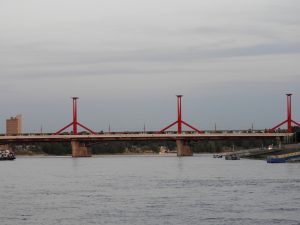
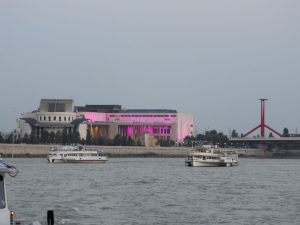
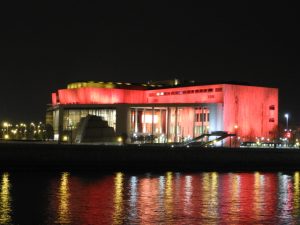
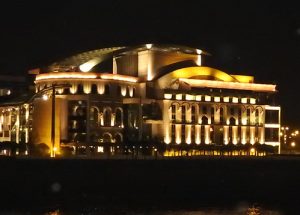
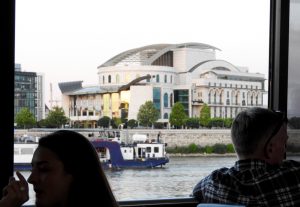
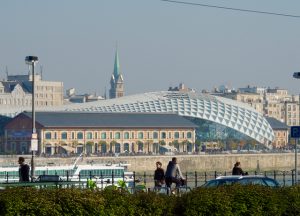
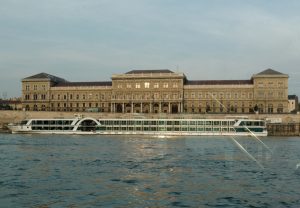
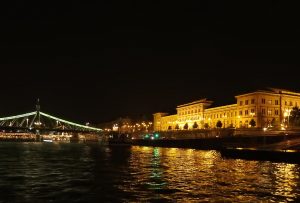
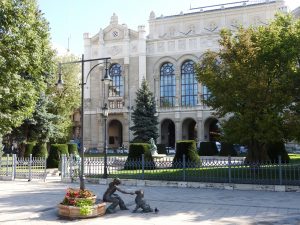
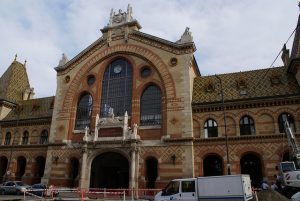
[…] area, and provides perhaps the most beautiful panorama of the city from the Buda side over the river Danube and its attractions in Budapest. It is also one of the most famous and favored destinations for Budapest photo […]